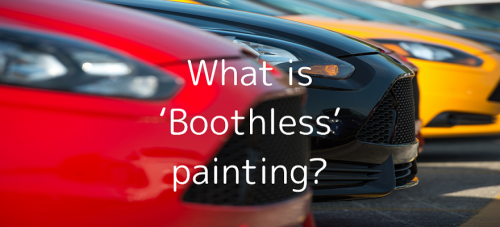Changes in Mobility Materials and Adhesive Solutions
2024-03-01
- Building / Infrastructure
- Electronics
- Mobility
- Product introduction
In line with recent moves toward decarbonization and carbon neutrality, there have been significant changes in the materials and processes that make up many products, including mobility and industrial products.

From the viewpoint of weight reduction, there have been changes not only in materials but also in the assembly process. This includes substituting materials such as iron, derived from mineral resources, for lightweight steel in resin, and employing bonding and welding methods in place of bolts. These changes represent a significant shift in both“material substitution”and“manufacturing processes.”
In terms of material substitutionthere are two advantages to changing from iron-like materials to non-ferrous metal materials and resin materials as described above.
- 1)The weight of the material can be reduced to about 1/5.
- 2)Generally, alternative materials are easier to produce in processing.
What are the different types of materials that tend to stick together or those that don't?
Alongside these materials changes, there are also alternative options for bonding and welding that are applicable to both joining and assembly processes.
“Surface energy” is a material property expressed as a constant unit and classified into three groups: high, medium, and low. Generally, materials with high surface energy tend to adhere well to adhesives, while those with low surface energy do not.
Example:Iron, Glass, etc.

Example:Wood, PVC, etc.

Example:PP, EVA, etc.

Easy to stick
Hard to stick
As mentioned earlier, materials like iron, which were once commonly used and had relatively high surface energy, were easy to adhere to. However, with the replacement of materials, there is an increasing number of materials falling into the low and medium surface energy groups, which are harder to adhere to. Consequently, processing methods must change accordingly, making thorough checks necessary. In addition to material replacements, design preferences have also undergone significant changes. While liner and heavy designs in primary colors were preferred in the past, today's preferences lean towards gentle colors, loose-line silhouettes, and pastel shades.
Eco-friendly!?What is vinyl chloride?
"Vinyl Chloride"has long been used in many products and applications due to its high durability, ease of processing, and excellent cost performance. In terms of environmental considerations, more than half of this material consists of salt, with less than half being petroleum-derived and resource-saving material.
What Are the Different Types of Vinyl Chloride?
Within vinyl chloride, there are two min types: hard and soft. Despite its name, "soft PVC" has a supple texture resembling leather and is resistant to staining, making it a common choice for car interiors, bags, and interior accessories. The PVC contains "plasticizers" to achieve its flexible texture, but over time, these plasticizers can migrate and cause staining from adhesive surfaces, necessitating caution when gluing. While PVC itself has moderate surface energy and is relatively easy to adhere to , "soft PVC" presents challenges in adhesion and often requires special treatment. If you are planning to change the process or design for adhesion, it's helpful to determine the surface energy of the object to be attached (adhered) first. Understanding the properties of each adhered is also important.

In addition to recent changes in materials and processes, design, functionality, and other requirements have greatly evolved. Clarifying the desired product and future direction can be helpful in finding suitable materials.
Find more information
Our company has developed the5782 series of non-woven double-faced tape or securing vehicle interior components, a long-standing product known for its ability to adhere to even difficult-to-bond plastics. We offer a range of double-faced tapes suitable for various substrates.
Furthermore, we offer577SA-L double-faced tape specifically designed for adhering to soft PVC, as mentioned in this blog. Please take the time to discover



